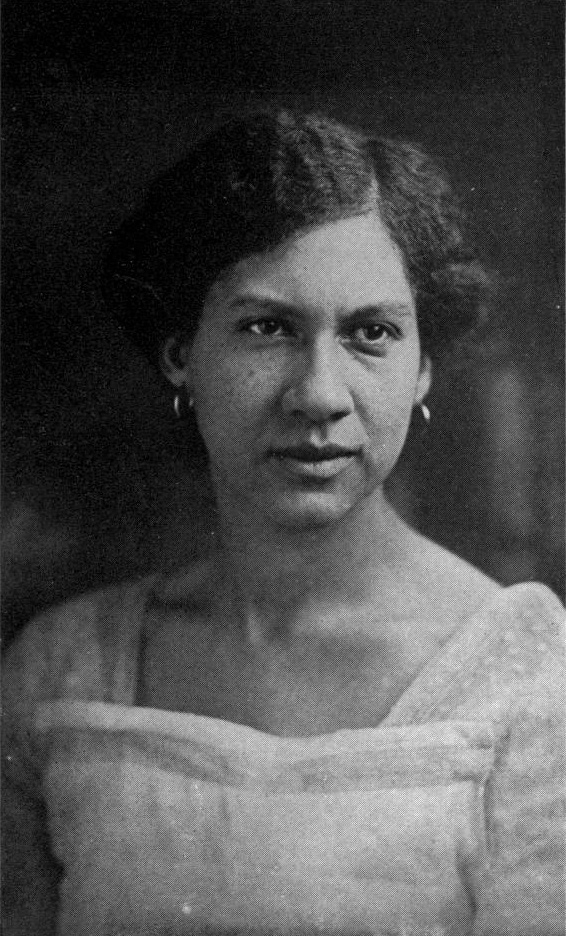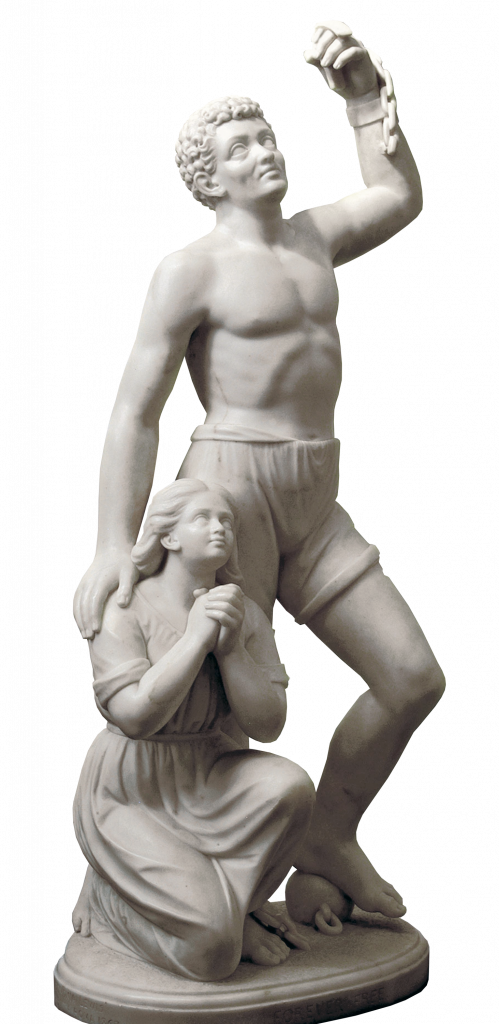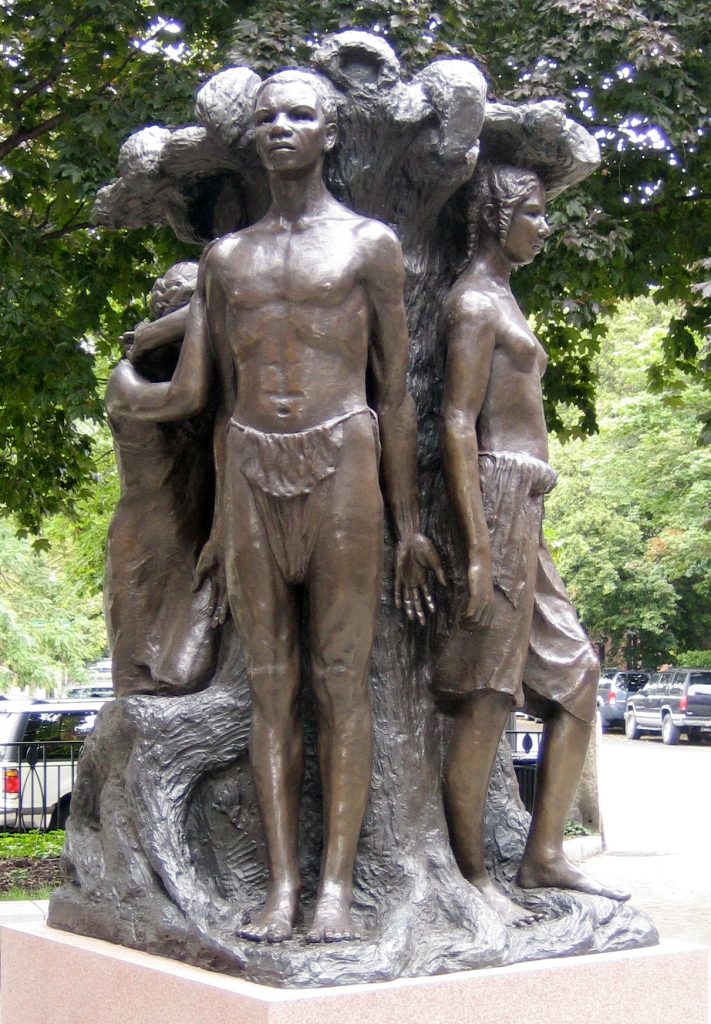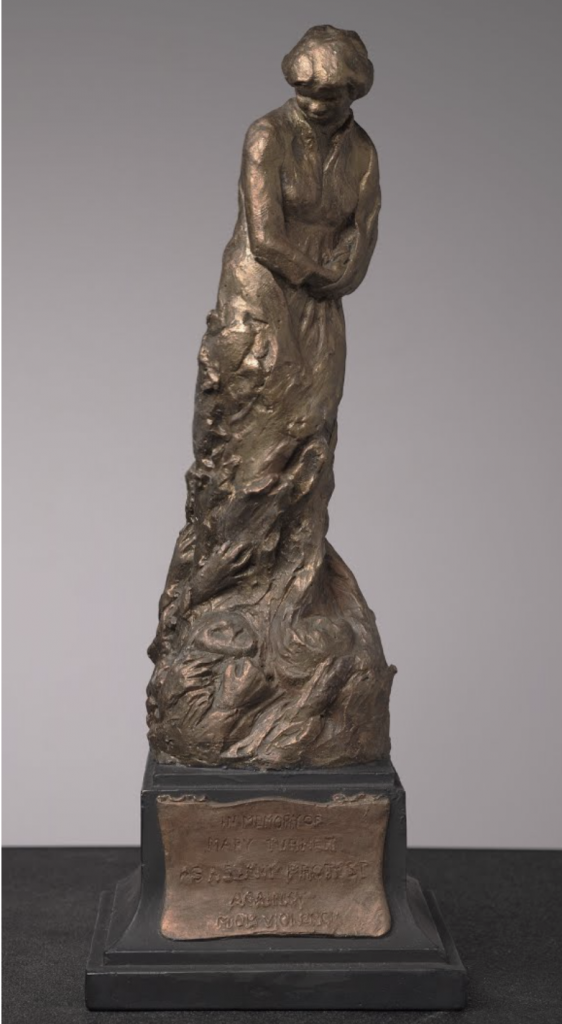
This main page on the Black female sculptor Meta Vaux Warrick Fuller has three more that branch off. This one is your starting point for a comparison between Meta Fuller and Edmonia Lewis, who is in some ways her predecessor and in other ways her complete opposite–as an artist who worked in a completely different style. The other pages will give you a sketch of Fuller’s life, a list of resources, and, COMING SOON, an essay about three of her sculptures and how they “talk back” to three works by Edmonia Lewis.
Like Edmonia Lewis, Meta Warrick Fuller was an African-American female sculptor who, after generating some excitement about her work during her lifetime, was largely forgotten. Like Lewis, she was also not “recovered” by art historians starting in the 1990s–in fact, the book-length study of Lewis by Kirsten Buick and of Fuller by Renée Ater came out in the same year, in 2011. I came across her name for the first time in one of the very first sources I read to find out more about Lewis, Lisa Farrington’s Creating Their Own Image: The History of African-American Women Artists from 2005. To Farrington, she is one of just two successors to Lewis that belong to the next generation of Black women sculptors (the other is May Howard Jackson, born the same year as Fuller; the more famous Augusta Savage is of the generation after that).
As two Black female sculptors, Edmonia Lewis and Meta Fuller are in many ways a study in contrasts, even as there are important similarities:
- Although both grew up in the North (New York and Ohio for Lewis; Pennsylvania for Fuller), their relationship to questions of race and racism, and especially to the South and to the legacy of slavery was very different. While Lewis stressed, perhaps based on partial knowledge, that she was exclusively descended from free Black people and Native Americans, Fuller’s paternal grandfather had come to Philadelphia, a city where many African-Americans were prospering, from Virginia with his wife and eight children just before the Civil War; the family was listed as mixed race (mulatto) in the census of 1860, so at least one of her grandparents had white ancestry. Fuller’s father was a popular barber and her mother a wigmaker and hairdresser; the family lived in an affluent part of town.
- Although Lewis and Fuller were both educated women from the middle class, Fuller’s life was much more stable in terms of social status and financial support, both as a child and after her marriage to a prominent Boston doctor and psychiatrist. But that stability also came at a price: unlike Edmonia Lewis, who–as far as we know–was single all her life and lived independent of any immediate family, Fuller seems to have struggled continually between making art and her obligations to her family–her mother and sister, her husband, her three children and the niece she adopted–and also to her community of middle-class Black activists invested in “uplift.” Often, these obligations had the upper hand, and her career as an artist lost out.
- Although both artists got much of their training in Europe, the shift from Lewis going to Rome in the 1860s to Fuller going to Paris around 1900 actually reflects a major change in the art world in general. Rome was getting old-fashioned; Paris became more than ever the hub of the art world. By the mid-1890s, even Lewis had moved to Paris–although we will probably never know what she thought about these new developments, and whether she participated in the radical changes and diversification of art styles that was beginning to affect sculpture as well as painting. Meta Fuller definitely did—she was heavily influenced by Rodin (of the famous Thinker) who was defying the conventions of neoclassicism. The Rodin-like quality of Fuller’s works created in Paris around 1900, when she was studying there, attracted quite a bit of interest at the time. Even though some of her work after 1920 is more conventional, Fuller’s later bronzes and painted plaster sculptures often show a deliberate roughness they owe to Rodin’s impact on her; Lewis’s neoclassical marbles often look tame and old-fashioned in comparison.
- But if Edmonia Lewis was fading from view around 1900 (by which time she had settled in England and had been all but forgotten) just as Fuller was rising in Paris’ new art scene, Fuller struggled and never quite succeeded to build on this budding fame, while Lewis had been internationally renowned for at least two decades–in the 1870s and 1880s, she was visited by many tourists in her studio in Rome, her Cleopatra was seen by tens of thousands of people at the Philadelphia Centennial in 1876, and she sold quite a number of both commissioned works and the portrait busts and popular figurines she created throughout this time period. By contrast, even though Meta Fuller’s (then still Meta Vaux Warrick’s) early career held much promise for a similar or even more stellar career–in Paris, she showed her work at the famous gallery of the art dealer Siegfried Bing, La Maison de l’Art Nouveau, that gave the going style of the 1890s and early 1900s its name–that promise remained basically unfulfilled. Although Fuller lived a long life (dying at the age of 91 in 1968), she only got a very few commissions in the years after her return to the US in 1902, and the works she produced after the 1930s were mostly seen (and in some cases purchased) by friends and family. The big commissions were few and far between (there were only three high-profile pieces that became somewhat well-known in as many decades: 1907, 1913, 1921) and the fame that she had hoped and worked hard for as a student did not come. Fuller was clearly aware of the factors that played a role here. A family friend, writing a profile a decade after Fuller’s death for the Negro History Bulletin, said that Fuller, looking back, “believed she would have been easily successful here [in the US] if she had been white” (Hoover 679); but gender pressures were also intense, since she was clearly trying to do it all—she wanted be an artist, be married with children, and also be active for social-justice causes, including pacifism, suffrage, and voting rights.
- Lewis and Fuller’s most directly political and “activist” works–like Lewis’ Forever Free and Fuller’s Emancipation sculpture, which both make emancipation from slavery their theme–are often most interesting to 21st-century art historians and cultural historians. But Fuller and Lewis have a complicated relationship to what we would think of as anti-racist or social-justice activism. In Lewis’ case, that relationship has to do with the (mostly, but not exclusively, white) abolitionists she met before and during the Civil War, and who continued to support her and purchase her work during the Reconstruction Era to some extent. As you can see elsewhere on this website, Lewis began her career with works that addressed racial politics directly, while her later sculptures are sometimes at first glance “apolitical.” By contrast, Fuller was initially reluctant to make race her theme and worked to be “universal.” But after meeting famous Black Activists (including W.E.B. du Bois) in Paris, she took on several commissions that participated in public displays of what we might now call Black excellence and Black pride–most importantly, her Emancipation (1913) and Ethiopia Awakening (1921). This use of art as “racial uplift” promoted by many Black activists at the time was one strategy to fight racism and segregation in American society. But highlighting the achievements of Black people in a time of horrific lynchings and “race riots” incited by whites who felt threatened by those achievements had its limits, and Fuller’s “protest sculpture” Mary Turner: A Silent Protest Against Mob Violence (1919) addresses these to a certain extent. In my discussion of these three sculptures, Fuller’s best-known works, in comparison to three sculptures by Lewis (coming soon!), I will try to do justice to the differences in Lewis’ and Fuller’s approach to addressing race and racism in sculpture that go beyond the visible differences in style and material (neoclassical vs. Rodinesque; marble vs. bronze and plaster) that have to do more with the generational shift in taste and artist training than with the goals they had for their art.



